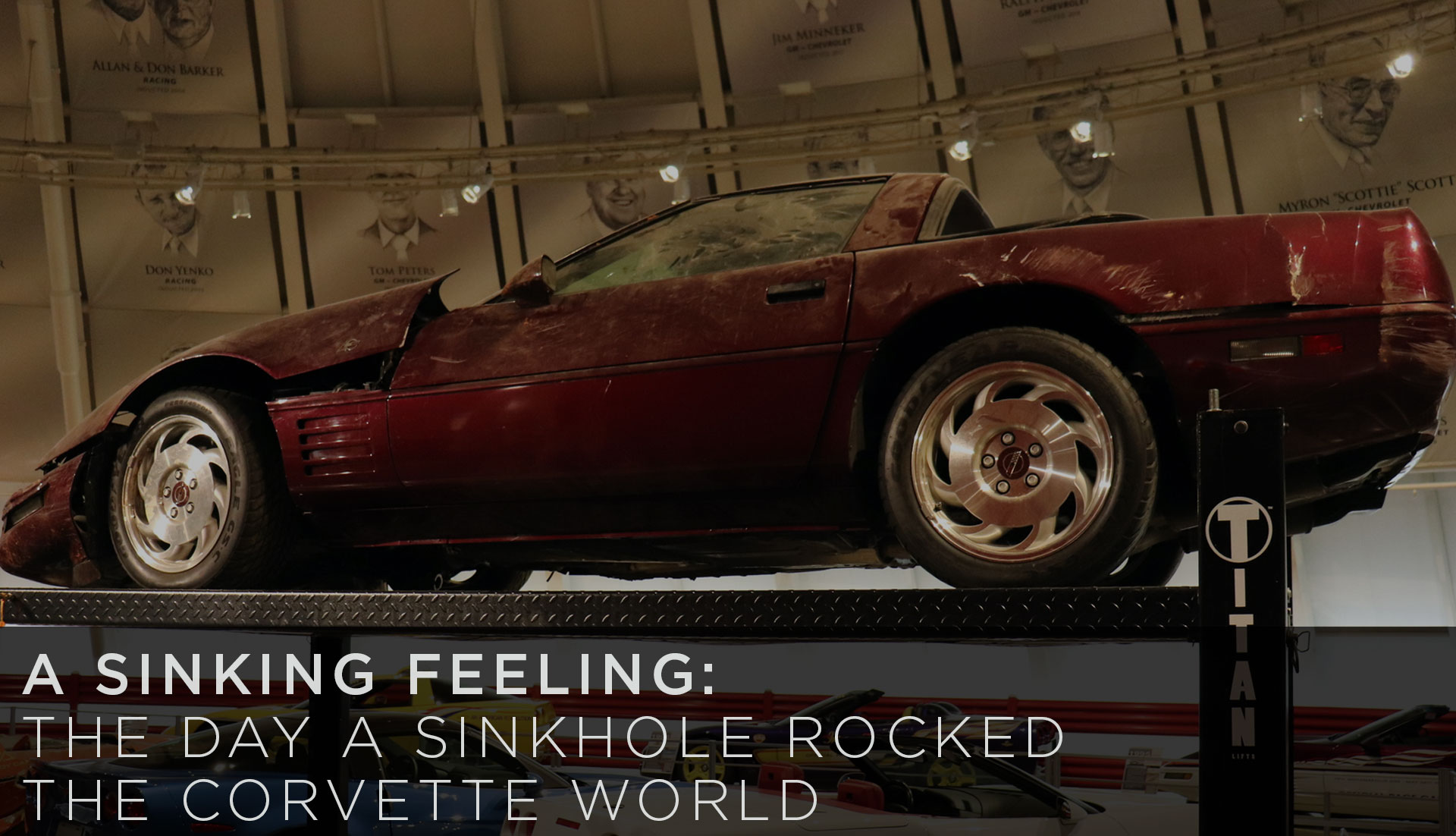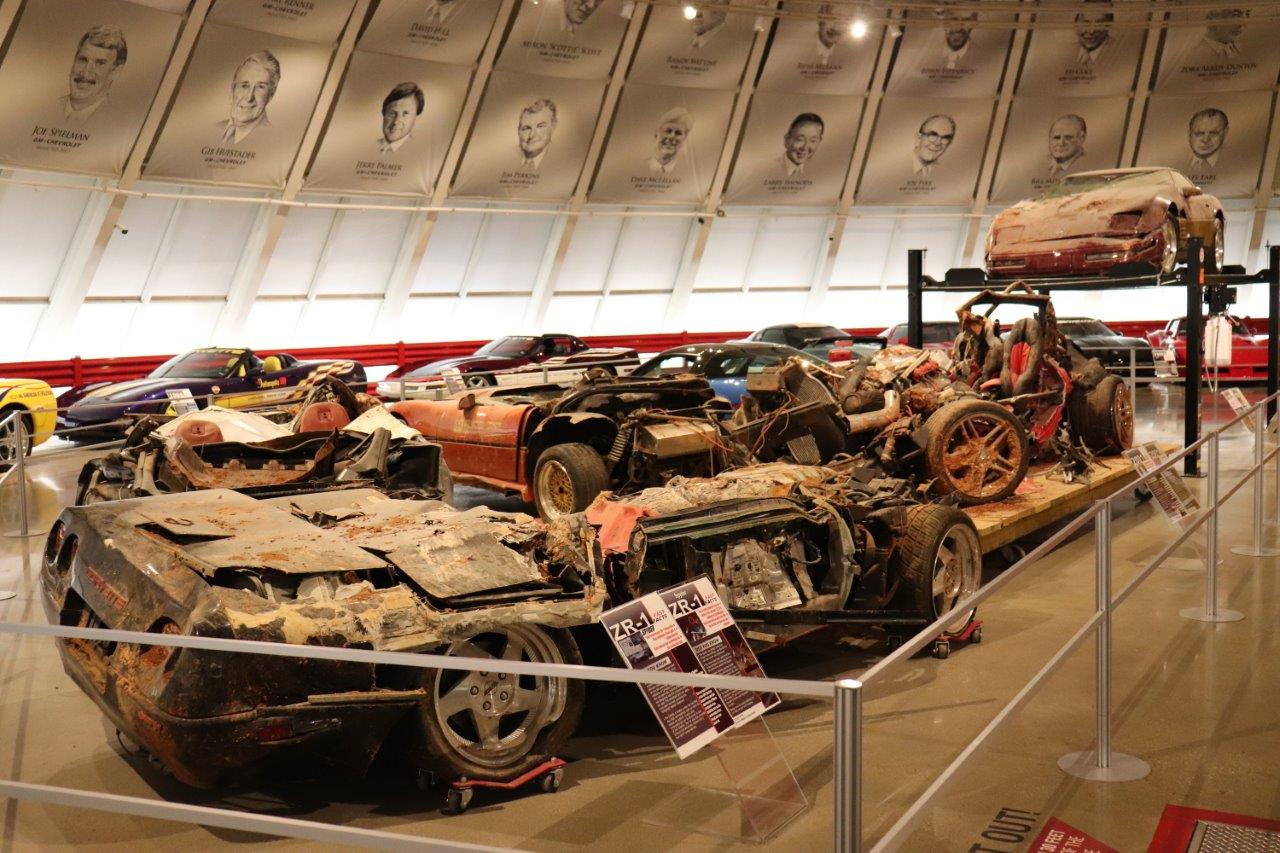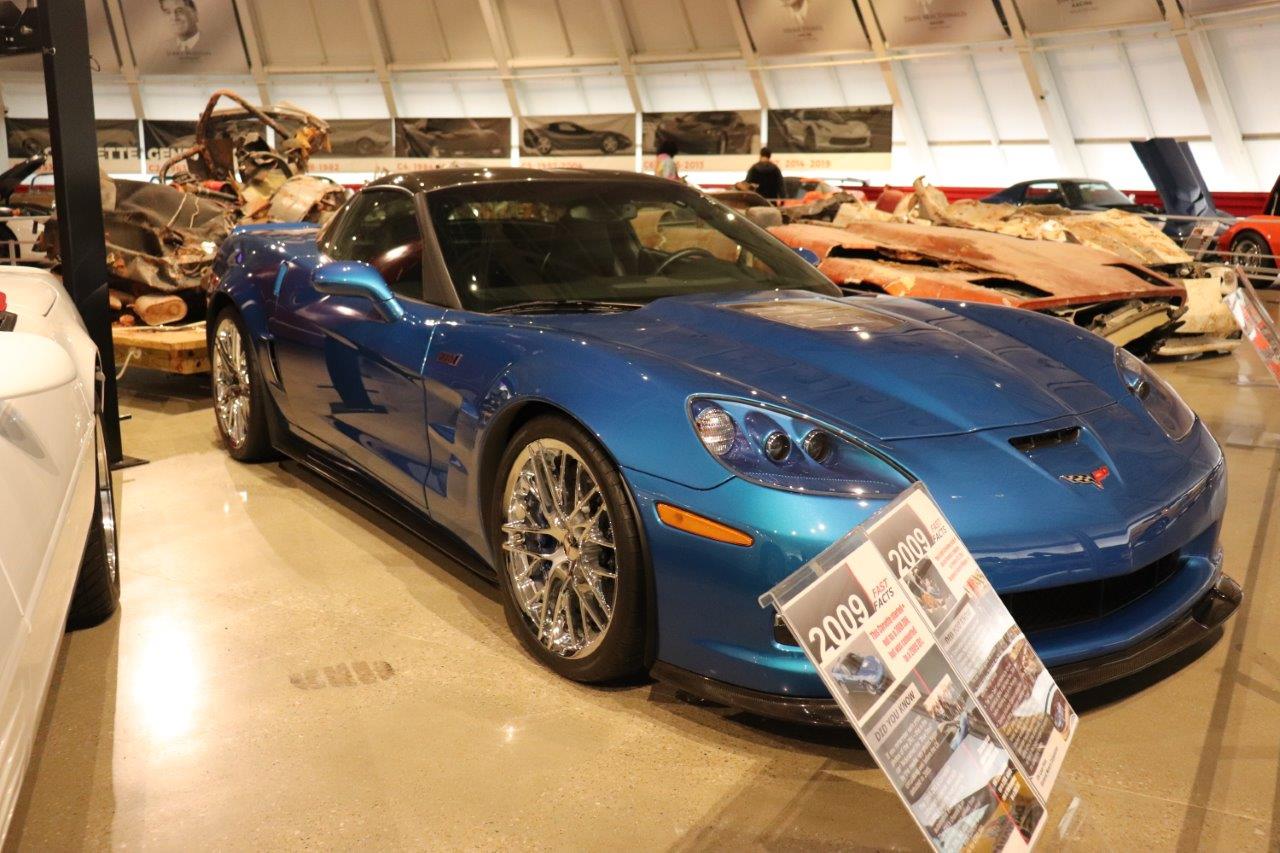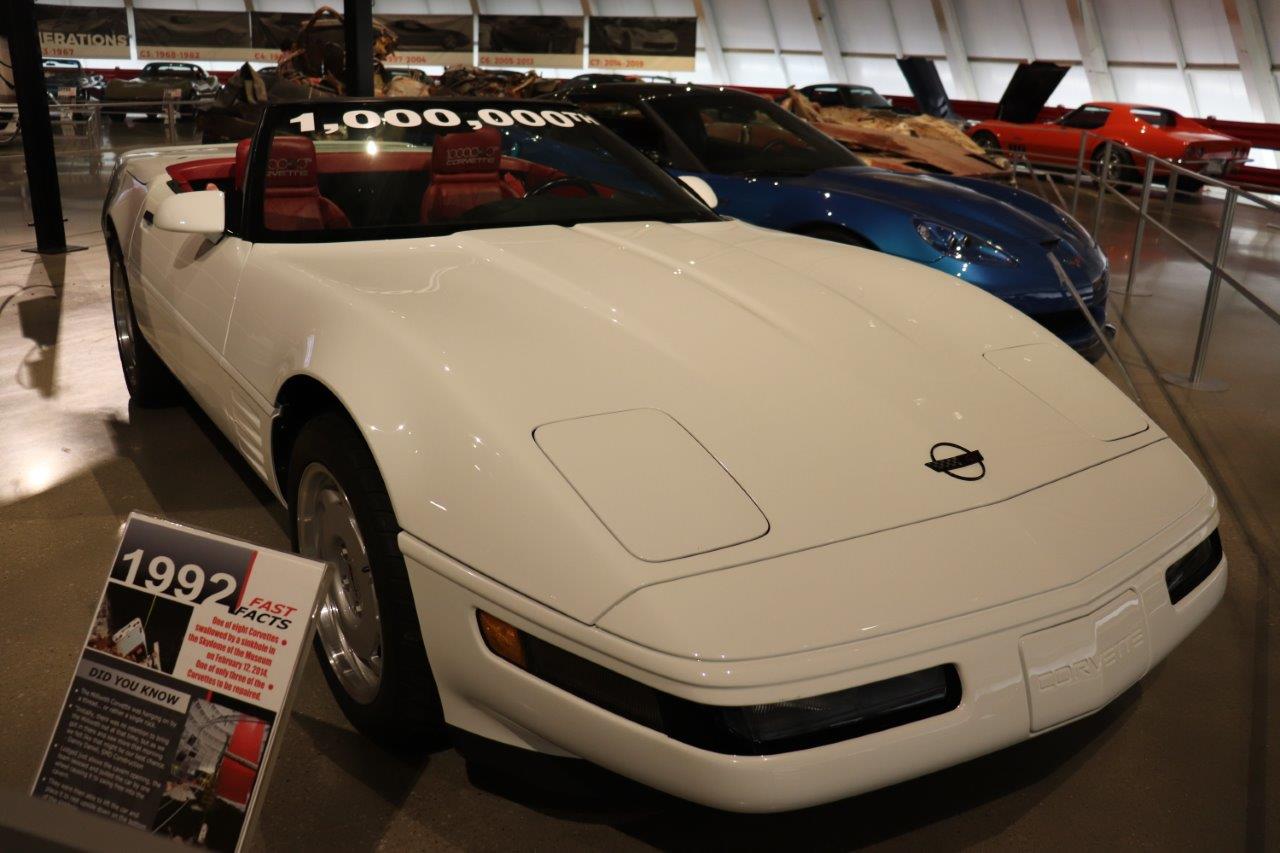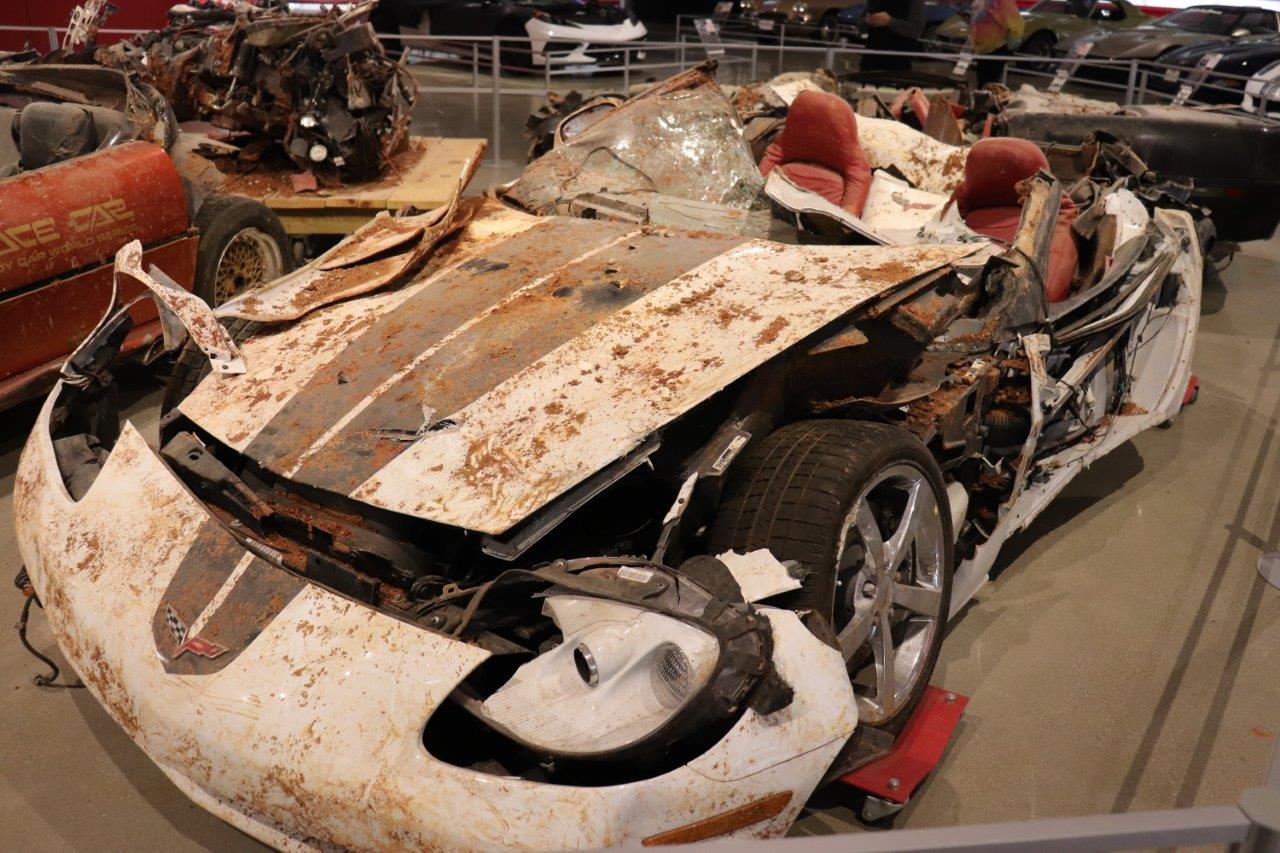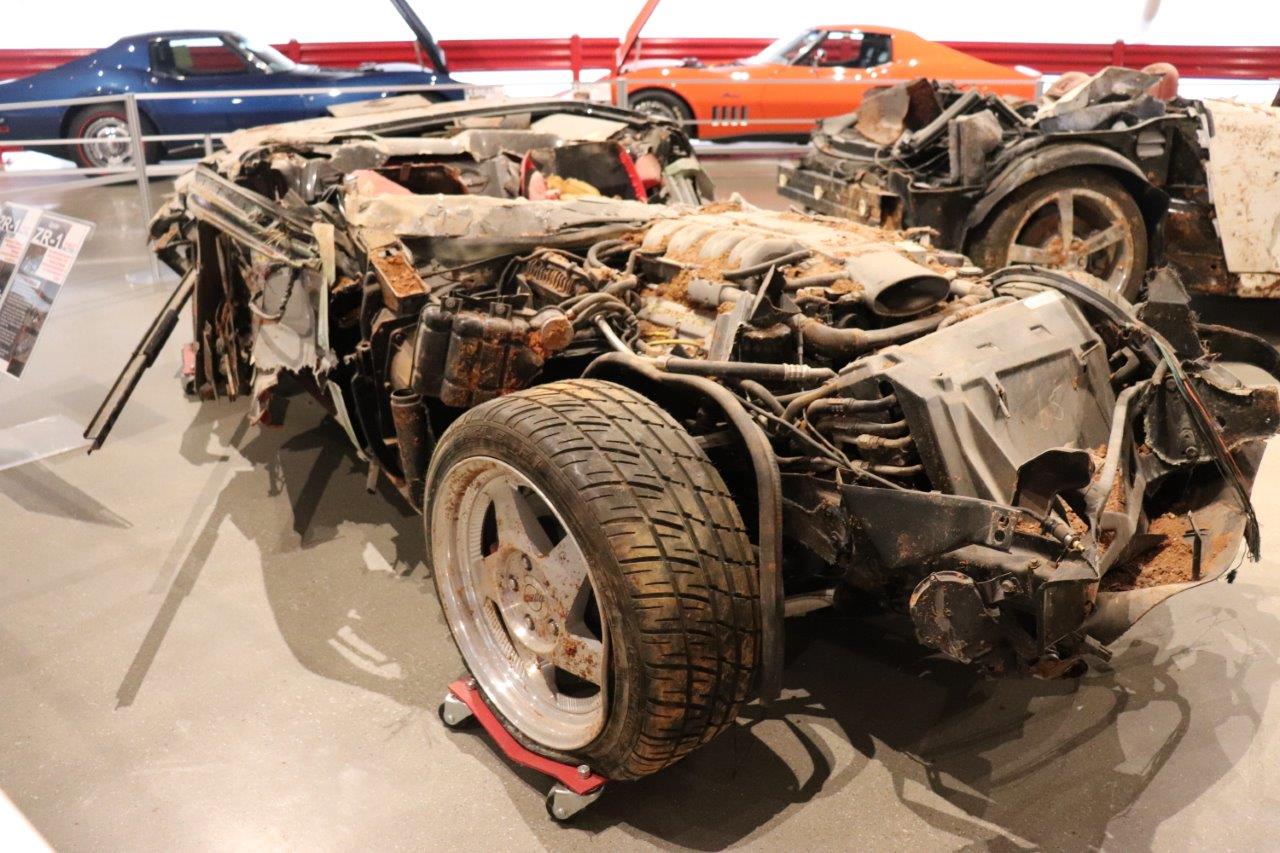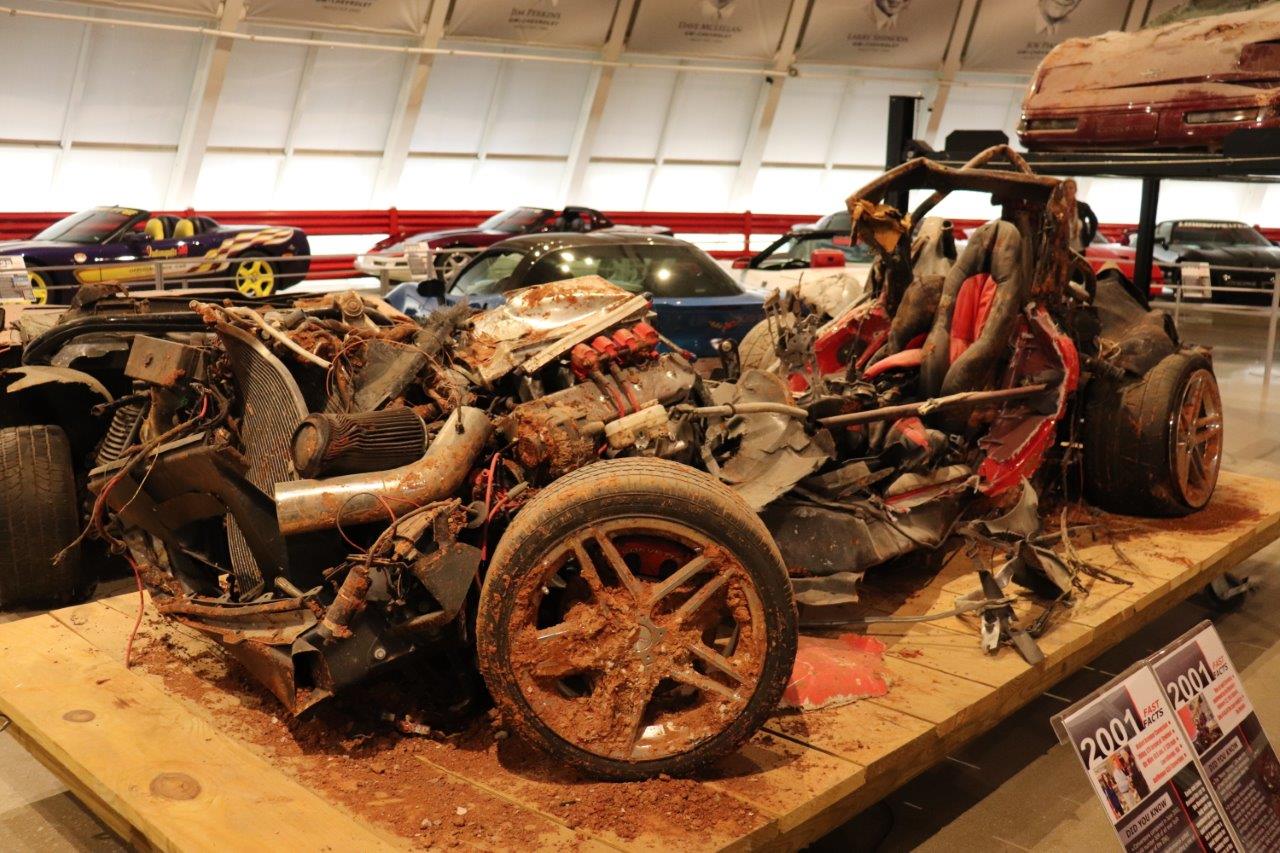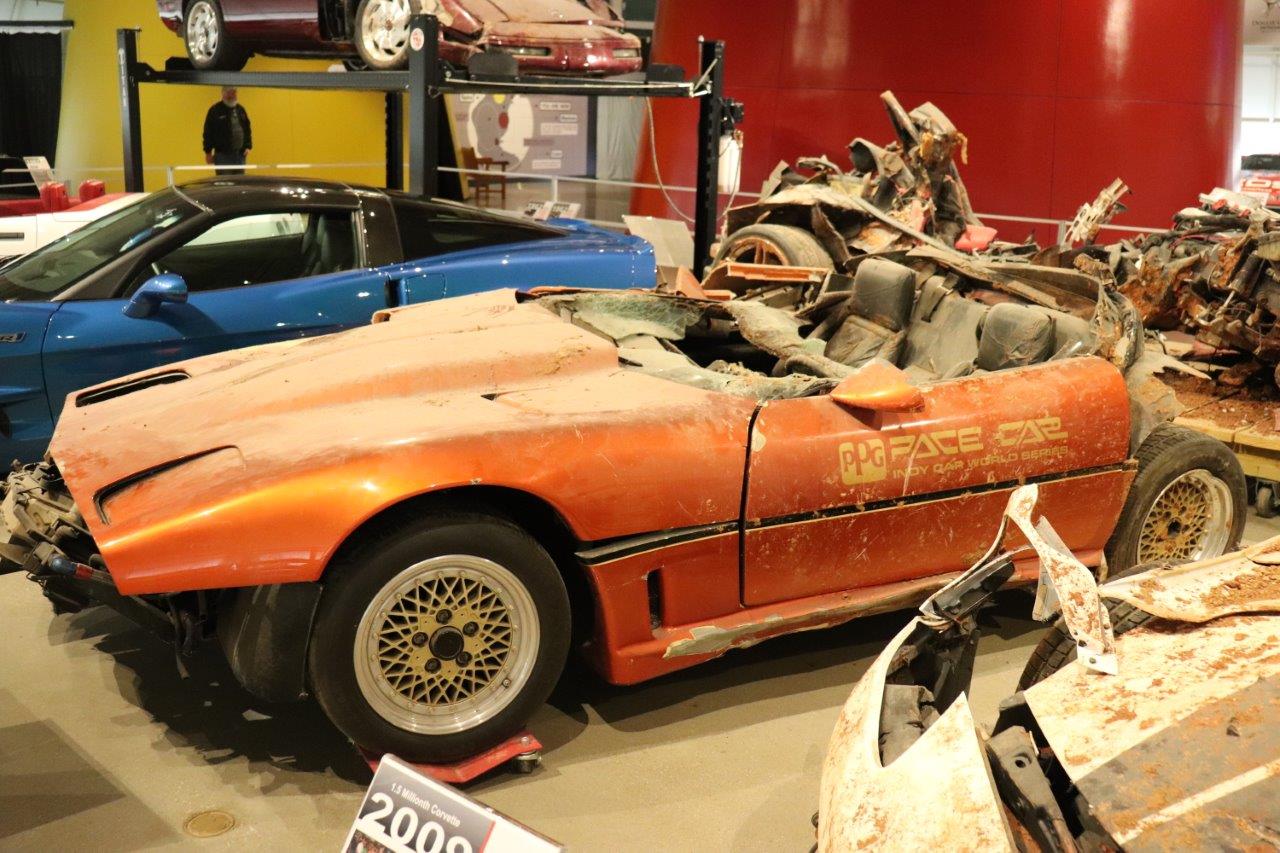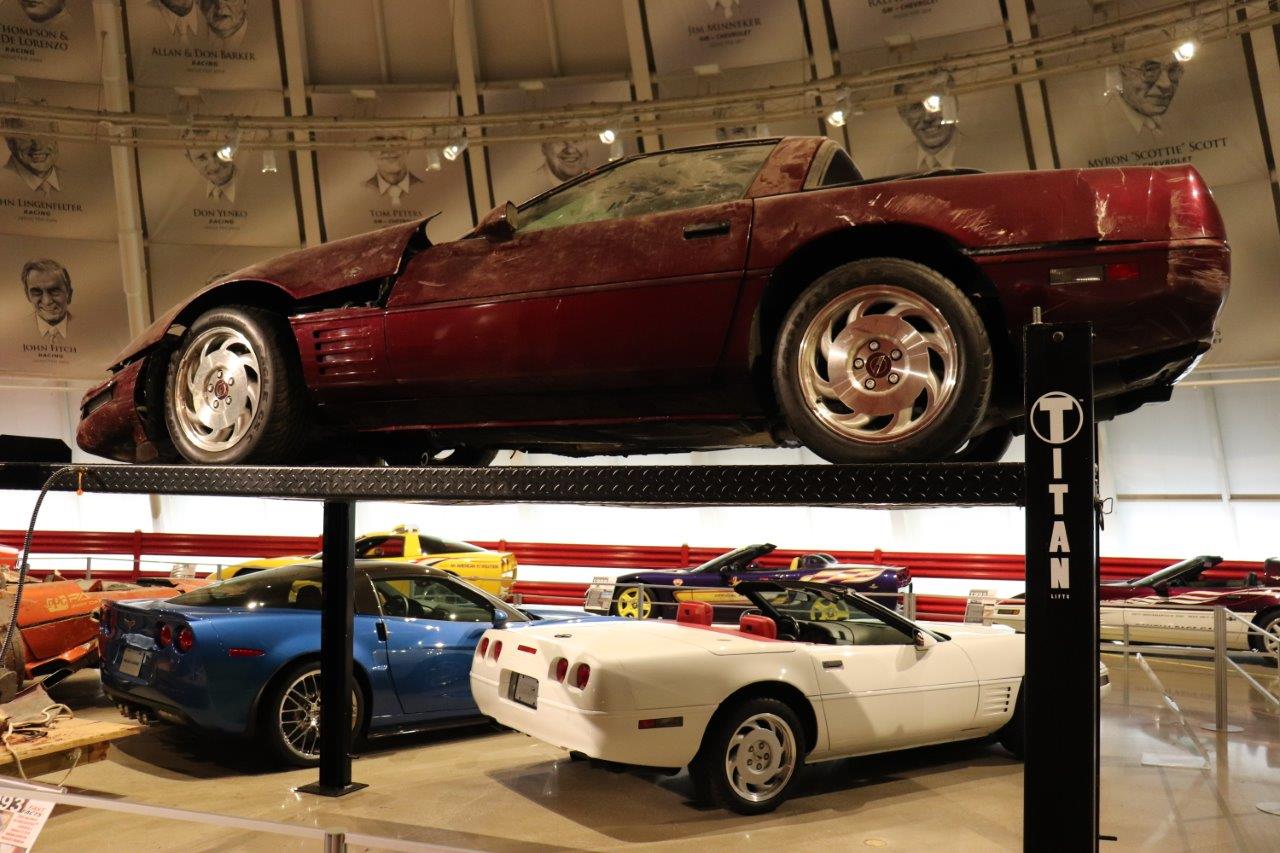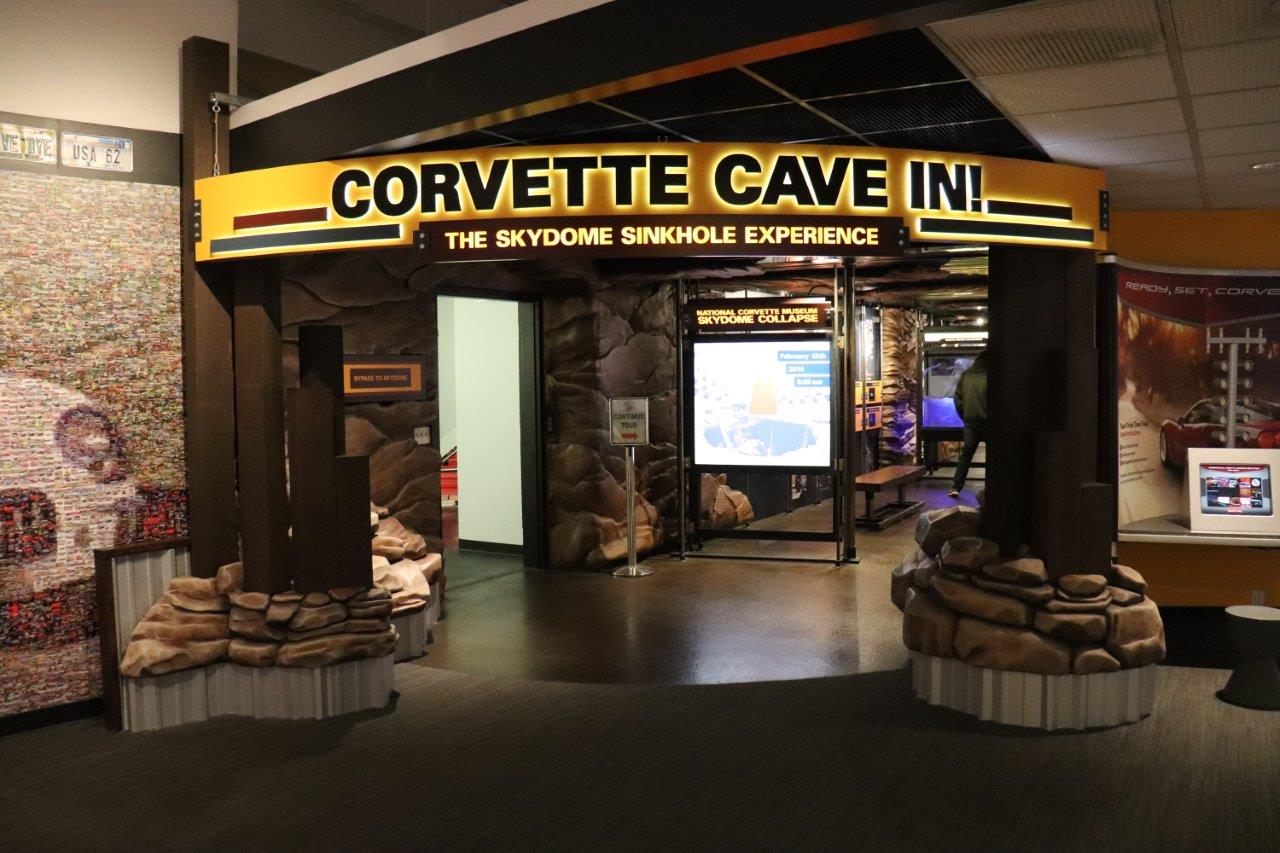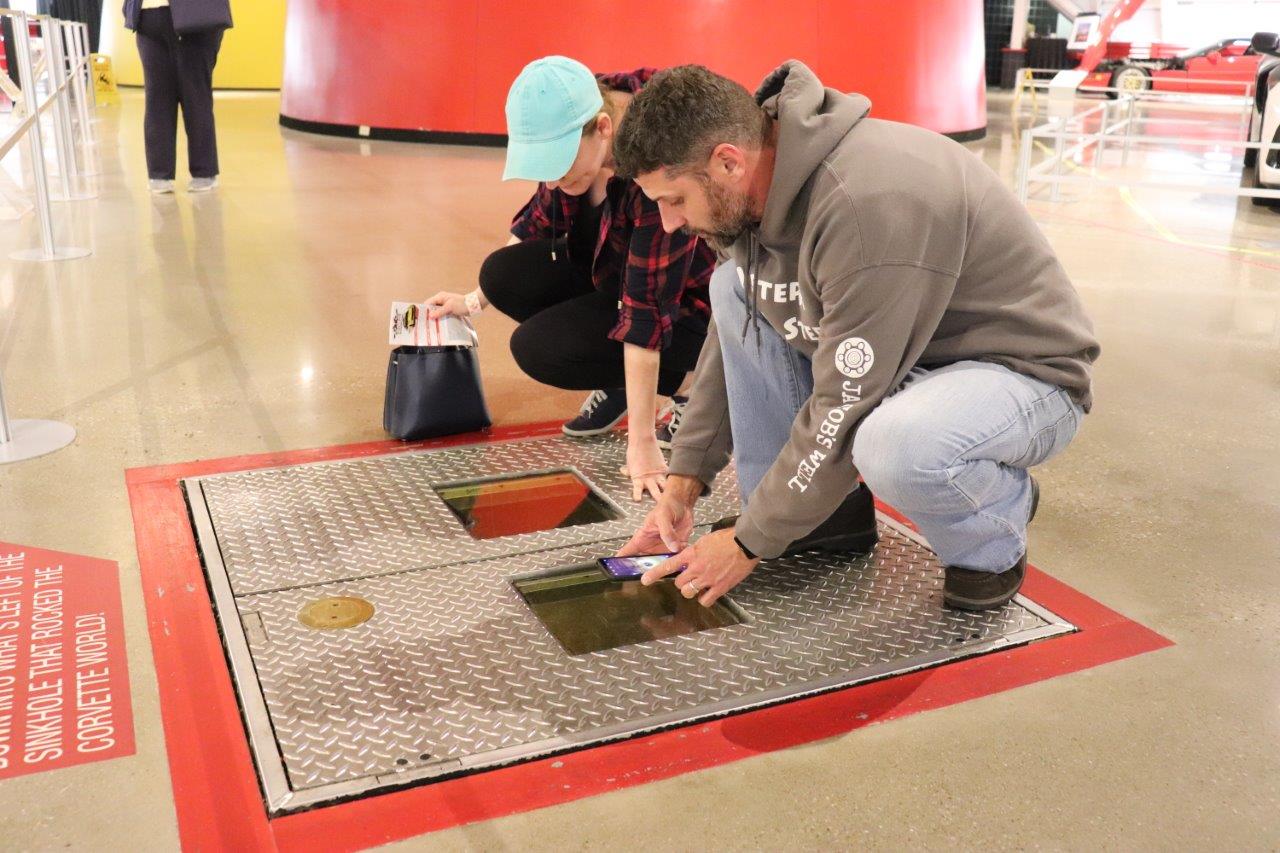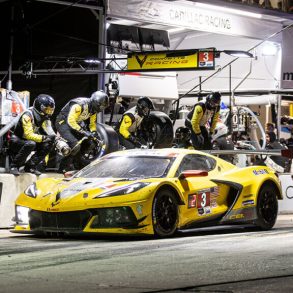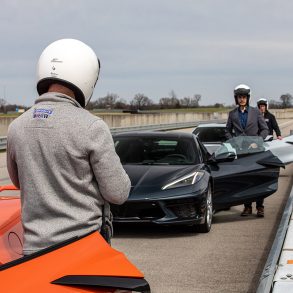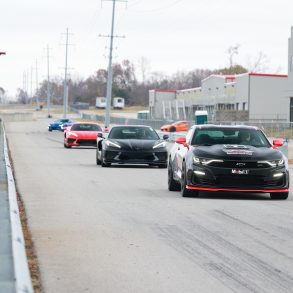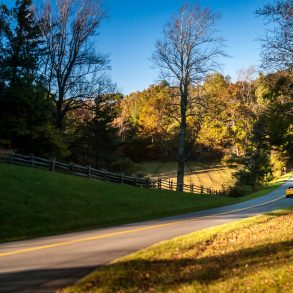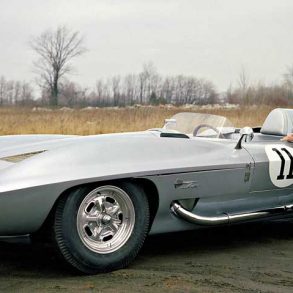Mother Nature displays her awe-inspiring force in many ways. Some can be serene and beautiful. At other times, this display can take an outwardly destructive turn. When this happens, little is immune to the damage and ill effects that are to follow. On February 12, 2014, the world learned that even some of the most historically significant Corvettes ever produced could not escape nature’s fury.
Opened in 1994, the National Corvette Museum sits approximately one-quarter of a mile from the GM Bowling Green Assembly Plant that has turned out every Corvette produced for nearly the last forty years. The National Corvette Museum serves as a historical catalog, displaying and archiving some of GM’s most valuable Corvette masterpieces and highlighting key points of America’s favorite sports car’s rise to infamy.
The Skydome segment of the museum is home to a number of highly prized Corvettes, many of which are of irreplaceable nature. Among the Corvettes housed in the Skydome are concept and research models that never became commercially available, anniversary and milestone cars, and non-production, one-off performance vehicles.
At approximately 5:38 A.M. on the morning of February 12, 2014, the fate of the iconic Corvettes contained within the Skydome was called into immediate question, as a 25-30 foot deep sinkhole opened up under the dome’s foundation. Corvette owners, collectors, and enthusiasts alike scoured the Internet and clung to reporting newscasts, in search of answers regarding how extensive the scope of damage to the museum’s collection had been.
When the dust had cleared, and emergency and museum personnel had arrived to assess the damage, it quickly became evident that the resulting damage was extensive. In total, eight one of a kind, irreplaceable Corvettes were found to have fallen into the depths of the cavern below. Some were outwardly visible. Others, however, were unaccounted for, seemingly swallowed whole by the earth beneath.
How Could This Happen?
If you have ever ventured along I-65’s north to south route, through the rolling hillsides and farmland of South-Central Kentucky, you might have noticed a somewhat curious sight. The cattle pastures and agricultural fields of the area are adorned, in a seemingly random fashion, by holes that are present in what would otherwise appear to be pristine ground. These earthen depressions are sinkholes, and the area in and around Bowling Green, Kentucky, is home to a nearly endless number of such geological features.
Sinkholes are ever prominent in South-Central Kentucky due in large part to the region’s karst topography, which is characterized by the prominence of water-soluble rocks such as limestone. Over the course of many years, the dissolving of such rock formations leads to the creation of underground water drainages and springs. With time, such drainages erode passageways into the bedrock, forming caves and caverns.
The presence of caves in the region surrounding the National Corvette Museum is extremely common. When the roof of these caves become weak and give way, or water drainage into a cave creates a void in the soil above, sinkholes such as the one that rocked the Corvette world in 2014, form as a result.
In the case of the Corvette Museum sinkhole, geological surveys concluded that water drainage from the museum complex had repeatedly built up at the sight, causing increased soil wash, and creating the void that ultimately led to the roof collapse of the cave below. Consequently, eight of the world’s most prized and highly regarded Corvettes fell to an uncertain fate as a result.
The Vettes That Fell Victim
In total, eight Corvettes fell from their place of display on the Skydome floor on that fateful February morning. All eight have their rightful place in the historical realm of elite Corvettes. After thorough and exhaustive efforts by construction, recovery, and engineering teams, all eight Corvettes were successfully removed from the depths of the sinkhole. The following is a list of the eight Corvettes that fell victim to the 2014 sinkhole collapse.
ZR-1 Blue Devil
The Blue Devil was the first 2009 ZR-1 Corvette that GM churned out. Upon its unveiling, the ZR-1 Blue Devil was deemed GM’s most powerful automobile ever sold. Boasting a top speed of over 200 MPH and generating a staggering 638hp, this Corvette was a force to be reckoned with. At the time of the collapse, the Blue Devil was on loan to the Corvette Museum by General Motors.
Fate:
The Blue Devil was the first Corvette to be removed from the sinkhole, and despite a 30-foot fall, suffered relatively minor damage in relation to many of the other cars that fell from the Skydome floor. Damage included cracked ground effects, a broken passenger-side rocker panel, bent rear control arms, cracked oil lines, and passenger front fender damage. The Blue Devil was fully restored by GM and is now back on display at the National Corvette Museum.
The Millionth Corvette
When the Millionth Corvette rolled off the line at the Bowling Green Assembly Plant on July 2, 1992, it was welcomed into the sports car world by members of the GM elite and automotive journalists alike. The Millionth Corvette was styled after its original 1953 predecessor, featuring a white paint scheme with a red interior.
Fate:
The Millionth Corvette was found lodged in the mouth of the cave below, hanging from a single boulder. The car was initially lifted by one individual wheel, to free it from its earthen perch. The Millionth Corvette was then hoisted from its would-be grave after a more secure lifting point could be obtained. After its removal, this iconic Corvette was sent for restoration by GM officials and returned to the National Corvette Museum, where it remains on display today.
1962 Convertible
There were 14,531 Corvettes built during the 1962 production year, all of which were convertibles. This 1962 Corvette is a one-owner car that the museum acquired as a donation in 2011, along with a cash donation for the car’s upkeep.
Fate:
The 1962 Convertible was the third Corvette removed from the sinkhole. The car received minor damage in relation to that incurred by the other Corvettes involved in the sinkhole collapse. The 1962 Corvette was restored by the museum’s maintenance and preservation department.
1.5 Millionth Corvette
The 1.5 Millionth Corvette rolled off the Bowling Green Assembly Plant’s production line on May 28th, 2009. Like the original Corvettes of 1953 and the Millionth Corvette that preceded it, the 1.5 Millionth Corvette featured an Arctic White paint scheme and a red interior. The National Corvette Museum acquired the car to preserve its legacy among the other milestone Corvettes that are housed there.
Fate:
Upon the sinkhole’s collapse, the 1.5 Millionth Corvette was not initially visible. It was only during the extraction of the Spyder, that the 1.5 Millionth Corvette was located, completely covered in dirt and debris. It was finally extracted on April 3, 2014.
Upon recovery, the decision was made that the car was beyond restoration. The 1.5 Millionth Corvette now sits on display in the Skydome as it appeared when removed from its cavernous grave.
1993 ZR-1 Spyder
The Spyder first debuted at the 1991 North American Auto Show to much fanfare. The Spyder was a full performance convertible ZR-1 that was the first concept car assembled on the line at the Bowling Green Assembly Plant. A specialty hood, quarter panels, and lowered front glass all served the Spyder well in differentiating it from other performance cars on the auto show circuit.
Fate:
The ZR-1 Spyder was initially found nearly completely buried within the rubble. Extraction was tedious and required removal of a large boulder that was lodged in the cabin of the car. The Spyder was removed from the depths of the sinkhole on April 1, 2014. The car was deemed irreparable by GM restoration teams.
Mallet Hammer
The Mallet hammer had been donated to the National Corvette Museum a mere two months before the sinkhole collapse in hopes that it could be used for events held in conjunction with the museum’s motorsports track. This 2001 Z06’s list of conversions and upgrades made it a true powerhouse. At 700hp and 575 ft/pound of torque, the Mallet Hammer was a true iconic Corvette, that had been featured on the cover of GM’s High Tech magazine.
Fate:
The Mallet Hammer was one of two Corvettes that initially could not be located in the aftermath of the sinkhole collapse. It was eventually located in an upside-down position, buried by rubble, including a boulder of large diameter. The Mallet Hammer was the last Corvette to be removed from the sinkhole, and also the most heavily damaged. It was deemed irreparable and is now on display in its current state at the National Corvette Museum.
1994 PPG Indy Pace Car
The 1994 Corvette featured a 401 Cubic Inch Katech performance engine, custom suspension, and a Warner T-5 Transmission with Modified Overdrive. As a concept car, this 1994 Corvette was a truly unique, one of a kind specimen. The 1994 PPG Corvette served as a pace car in the Indy Car World Series.
Fate:
The 1994 PPG Corvette was found upside down, nearly completely covered in dirt and debris. A large portion of concrete “sliced” into the car upon impact, damaging it extensively. Upon removal from the sinkhole, the decision was made to forgo restoration, as over half of the vehicle’s parts would have to be replaced.
1993 40th Anniversary Corvette
This 40th Anniversary Corvette was one of only 6,749 Ruby Red Metallic Corvettes built for the 1993 production year. Hill and Karen Clark donated the 40th Anniversary Corvette to the National Corvette Museum.
Fate:
Ruby, as known by museum staff and visitors, was displayed on a lift at the time of the sinkhole collapse. Although the car was one of three Corvettes that were found on top of the sinkhole’s debris pile, and the second to be recovered, it had suffered extensive damage and repair costs would have far exceeded the car’s value. For this reason, the 40th Anniversary Corvette is displayed at the National Corvette Museum in the condition in which it was recovered.
Moving Forward
Once all of the prized Corvettes were removed from the confines of the sinkhole’s depths, an intriguing question remained. What should be done with the treacherous pit that rocked the very foundation of the Corvette world? While initial talks included plans to stabilize the sinkhole for viewing as it presented itself successive to the collapse, this proved to be an unjustifiable financial undertaking.
Reports cited that preservation of the sinkhole would cost approximately one million dollars above the initial estimate for complete sinkhole repair. Another reason given for repairing the sinkhole in its entirety was that preservation of the sinkhole would require the placement of unsightly beams and barrier walls that would dampen the intended experience.
The ultimate decision was made to fill and completely repair the sinkhole and the affected portion of the Skydome floor. The overall project cost tallied a sum of 3.2 million dollars upon completion. The Skydome officially reopened on September 3, 2015, roughly a year and a half after the sinkhole’s collapse.
On February 12, 2016, the second anniversary of the sinkhole collapse, a new exhibit opened at the National Corvette Museum, giving visitors an in-depth look at the events of that fateful day. The Corvette Cave In: The Skydome Sinkhole Experience is an interactive journey through the timeline, circumstances, and aftermath of the museum’s sinkhole collapse.
Visitors can explore the events of February 12, 2014, experience the collapse first hand in a sinkhole simulator, and view the Corvettes involved in the sinkhole catastrophe. The Skydome now features a map outlining its location to the proximity of the cave beneath, color-coded floor markings indicating the previous sinkhole outline, and a manhole viewing port through which visitors can peer down into the cave below them.
Rising Once Again
Although the events that took place on the morning of February 12, 2014 certainly came as disheartening news to Corvette enthusiasts worldwide, the National Corvette Museum, much like the iconic Corvette itself, beared far too much intrinsic value to be kept down by any worldly force.
Although five irreplaceable Corvettes were damaged beyond repair that day, no one was injured, and according to staff, the number of annual visitors to the National Corvette Museum has never been better. The wayward events of the day in question only served to further add to the rich historical legacy of America’s favorite sports car.


